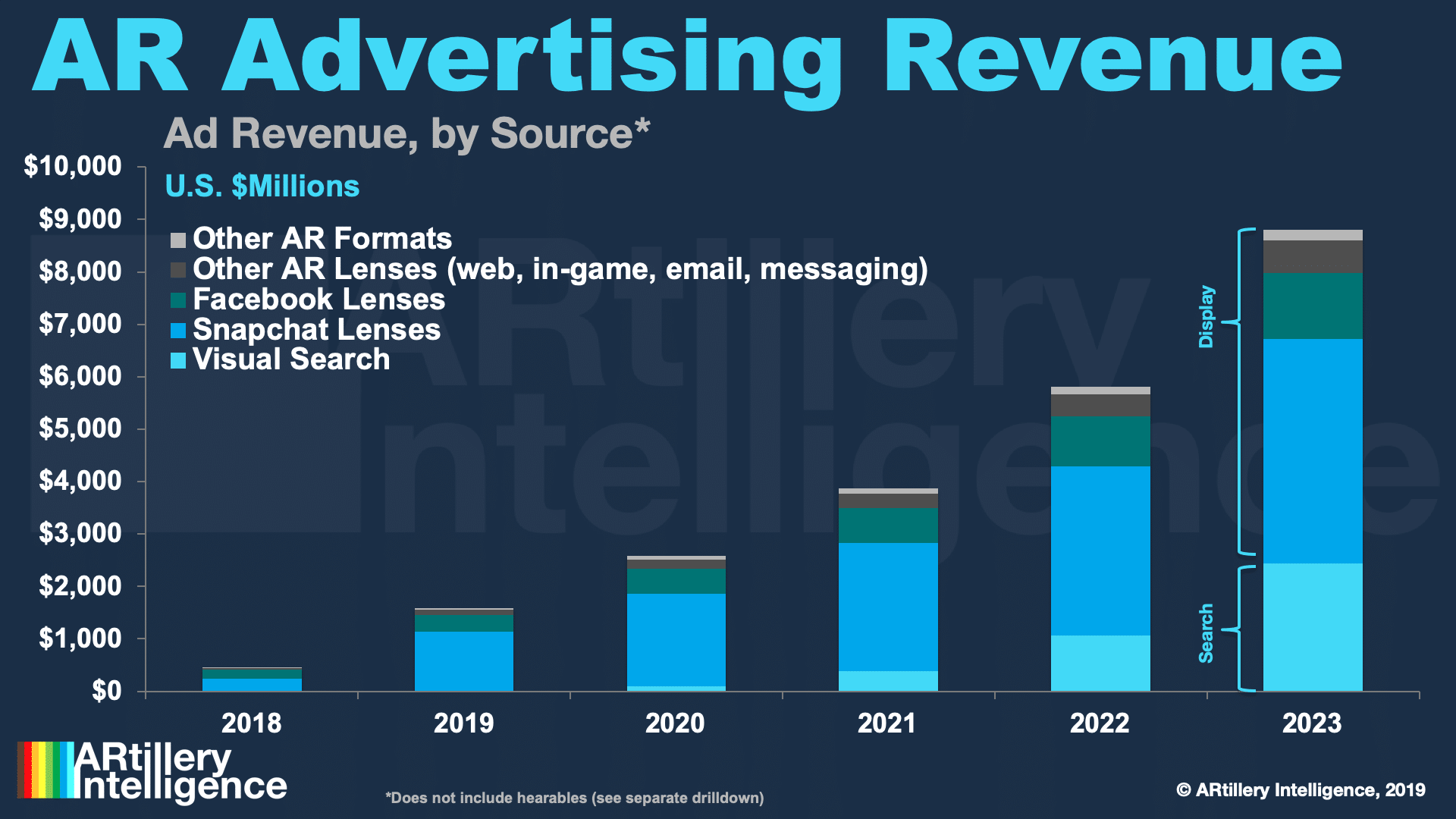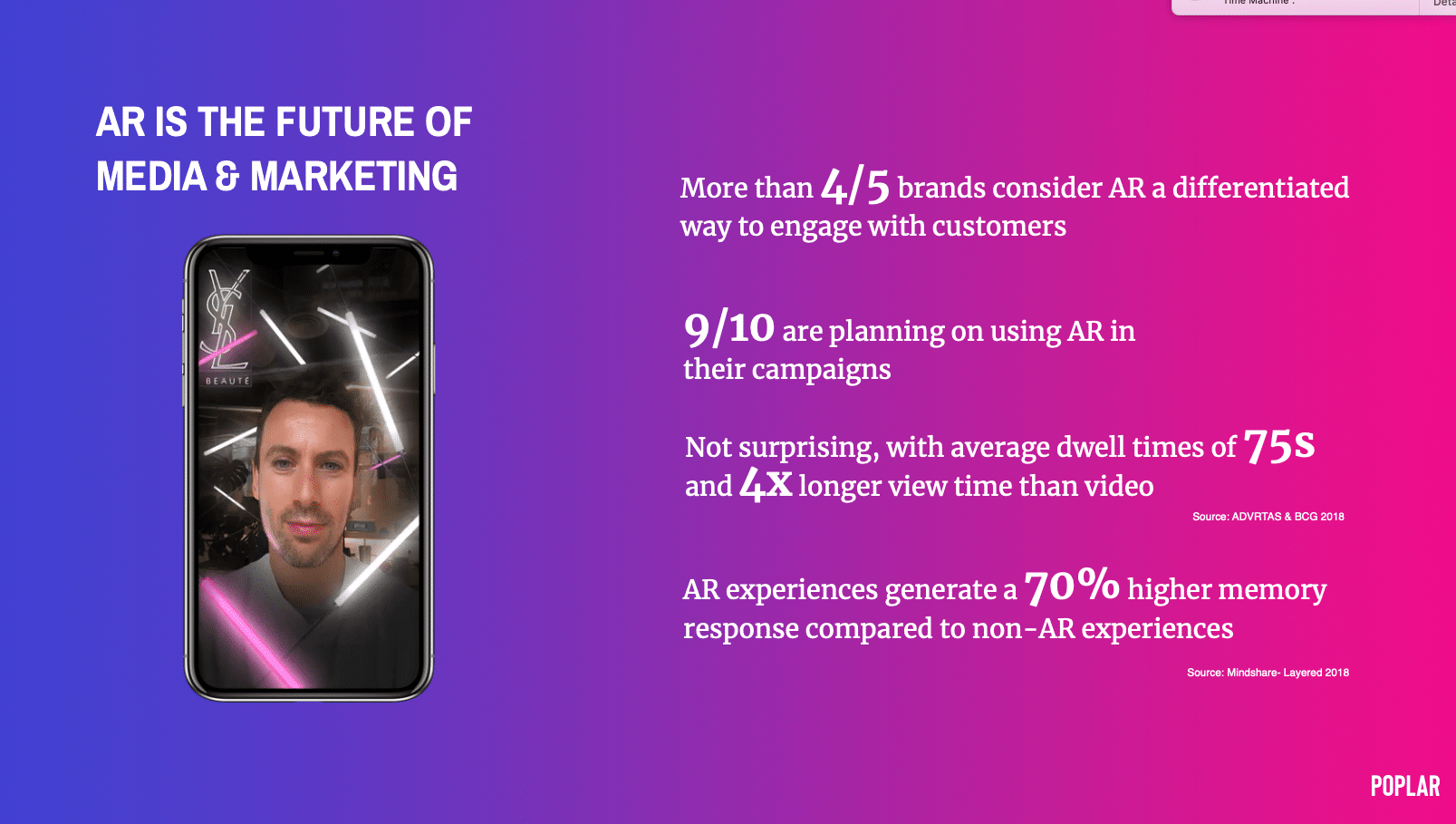
This is the latest in AR Insider’s Campaign Tracker series. Running semi-weekly, it examines marketing campaigns that utilize AR visualization such as product try-ons, and their results. For a full list of campaigns, comparative ROI chart and deeper analysis, subscribe to ARtillery PRO.
Proof points continue to roll out for AR’s effectiveness as an advertising medium. Early-adopter brands are learning that AR lets them demonstrate products in immersive ways. That can include brand engagement (upper-funnel) or “try before you buy” (lower-funnel) visualization.
More evidence from the upper-funnel side of the AR ad spectrum comes from AR ad-focused startup Poplar. It worked with pet food brand Purina on a Facebook and Snapchat world lens (rear-facing camera) that let users play with the brand’s Felix the Cat virtually in their space.
With Facebook and Snapchat as primary distribution channels, the campaign utilized sponsored lens options that amplify distribution to targeted users. The result was 5.8 million paid impressions at the time of CEO David Ripert’s AWE presentation last May — a total that’s since grown.
“We got an update on the impressions,” Ripert told us recently. “They’ve actually received a whopping 172MM paid impressions, on Facebook and Snap.”

Reach Play
To put the 127 million into perspective, the Superbowl — often heralded as a high-water mark for campaign scale — usually reaches just under 100 million TV viewers. This is a useful benchmark for perspective, but is of course apples to oranges with AR in terms of engagement levels.
Sticking with the sheer numbers (more on engagement in a bit), nine-figure audiences are one signal that AR advertising can achieve real scale. That’s not going to be the case for the majority of campaigns but these high-performing outliers are a leading indicator for the medium’s strength.
Results like this also counter doubt from brand advertisers about AR’s reach. The disconnect with such Madison Avenue sentiments signals the need for education. Part of that will come in the form of validation from campaigns like Purina, and other high-reach AR ads we’ve examined.
That realization and adoption by a larger share of brand advertisers will cycle in slowly, just as it did for mobile advertising. This is happening to the tune of $1.5 billion in AR ad revenue last year according to our research arm ARtillery Intelligence, on pace for $8.8 billion by 2023.

Quality and Quantity
Back to the point about engagement levels, AR’s potential strength as a high-scale reach medium is coupled with potentially deep engagement and high frequency. This traces back to our longstanding assertion that AR ads have the rare ability to span the purchase funnel.
As further validation, the Purina campaign showed strong user engagement in the form of shares and captures. Specifically, 25 percent of users (as of Poplar’s first data release cited above) shared or captured the experience. This far exceeds static formats common to social advertising.
Moreover, dwell time is a metric we continue to examine as a more telling and native metric for AR performance. On that measure, the Purina campaign achieved an average 30-second play time. This is less than AR’s overall average of 75 seconds, but still greater than other ad formats.
For example, the average play time for video ads is about 20 seconds according to Poplar (see below). And video is a passive medium, compared to AR’s active engagement to play with a given experience. That orientation drives 70 percent greater memory response than non-AR formats.

History Tells Us
All of the above represent telling signals for AR’s efficacy as an ad medium. The ability to combine reach with engagement and span the consumer purchase funnel is somewhat rare among ad media. The inherently-social attributes also propel distribution through virality.
But it’s still early and we’ll continue to see AR campaign best practices develop from Poplar and others. There’s still much innovation to come around creative applications of the underlying technology to build compelling ad experiences. Think of it like mobile advertising in 2010.
Buried in that statement is the lesson to avoid the fate of those who were late to mobile advertising. Those who jumped at mobile early conversely developed a competitive edge. Consumer brands, if fitting to the medium, should start to build an AR knowledge base.
We’ll be back with more AR commerce proof points and takeaways in our Campaign Tracker series. There will be lots to watch and internalize as AR commerce evolves quickly from early and experimental stages to a firmer set of strategies around UX, user targeting, and distribution.
For deeper XR data and intelligence, join ARtillery PRO and subscribe to the free AR Insider Weekly newsletter.
Disclosure: AR Insider has no financial stake in the companies mentioned in this post, nor received payment for its production. Disclosure and ethics policy can be seen here.
